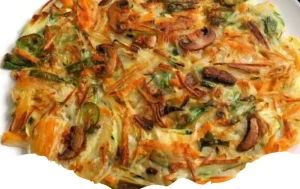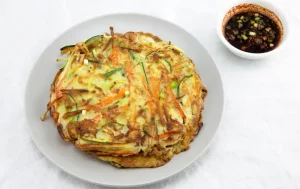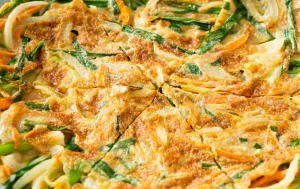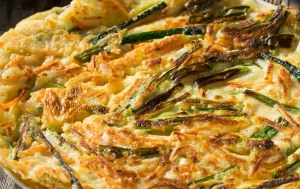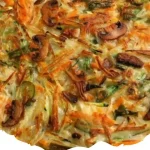Vegetable pancakes offer a delightful twist on a breakfast classic, infusing the light, fluffy texture of traditional pancakes with the nutritional benefits and vibrant flavors of fresh vegetables. Originating from various cuisines around the world, these savory treats have gained popularity for their versatility and healthful appeal. Perfect for any meal of the day, vegetable pancakes can be customized with a wide range of ingredients, from leafy greens and root vegetables to herbs and spices, making them a fantastic option for those looking to add more vegetables to their diet in a delicious and creative way.
Choosing the Right Vegetables
The key to making exceptional vegetable pancakes lies in the selection of vegetables. Opt for a colorful mix to enhance both the visual appeal and nutritional value of the pancakes. Carrots, zucchini, and spinach are popular choices for their mild flavors and ability to blend seamlessly into the batter. For a more robust taste, consider adding shredded sweet potatoes, bell peppers, or finely chopped kale. It’s important to drain any excess moisture from the vegetables to prevent the pancakes from becoming soggy. This step ensures that the pancakes will cook evenly and attain a desirable texture.
Preparing the Batter
The foundation of vegetable pancakes is a simple batter that balances the flavors of the vegetables with the right consistency for cooking. Start with a base of all-purpose flour, although whole wheat or gluten-free flours can be substituted for those with dietary restrictions. To the flour, add eggs, milk (or a dairy-free alternative), and a pinch of salt to create a smooth, pourable batter. For added flavor, incorporate seasonings such as garlic powder, smoked paprika, or fresh herbs like chives or parsley. The vegetables are then folded into this batter, distributing them evenly throughout.
Cooking Techniques for Perfect Pancakes
Cooking vegetable pancakes to perfection requires a bit of technique. Heat a non-stick skillet or griddle over medium heat and lightly grease it with oil or butter. Pour small amounts of the batter onto the hot surface, spreading it into thin circles. Cook until the edges begin to brown and bubbles form on the surface, then flip and cook the other side until golden brown and crisp. The pancakes should be served immediately while hot and crispy, or kept warm in an oven until ready to serve. This method ensures that each pancake is cooked through and has a delightful exterior texture.
Serving Suggestions and Pairings
Vegetable pancakes are incredibly versatile and can be served in numerous ways. For a simple breakfast or brunch, pair them with a dollop of sour cream, Greek yogurt, or a sprinkle of feta cheese. They can also be accompanied by poached or fried eggs for added protein. For lunch or dinner, consider serving them alongside a fresh salad or as part of a larger meal with grilled chicken or fish. Dipping sauces, such as tzatziki, hummus, or a spicy aioli, can elevate the dish by adding another layer of flavor. The possibilities for serving and pairing vegetable pancakes are endless, allowing for creativity and personalization.
Nutritional Benefits and Dietary Adaptations
Vegetable pancakes not only offer a delightful eating experience but also provide significant nutritional benefits. Packed with vitamins, minerals, and fiber from the vegetables, these pancakes can be a healthful addition to any meal plan. For those with specific dietary needs, the recipe can easily be adapted. Use gluten-free flour for a gluten-free version, or incorporate plant-based milk and egg substitutes to make the pancakes vegan. By adjusting the base ingredients and experimenting with different vegetable combinations, vegetable pancakes can cater to a wide range of dietary preferences, making them a versatile and inclusive dish for everyone to enjoy.


